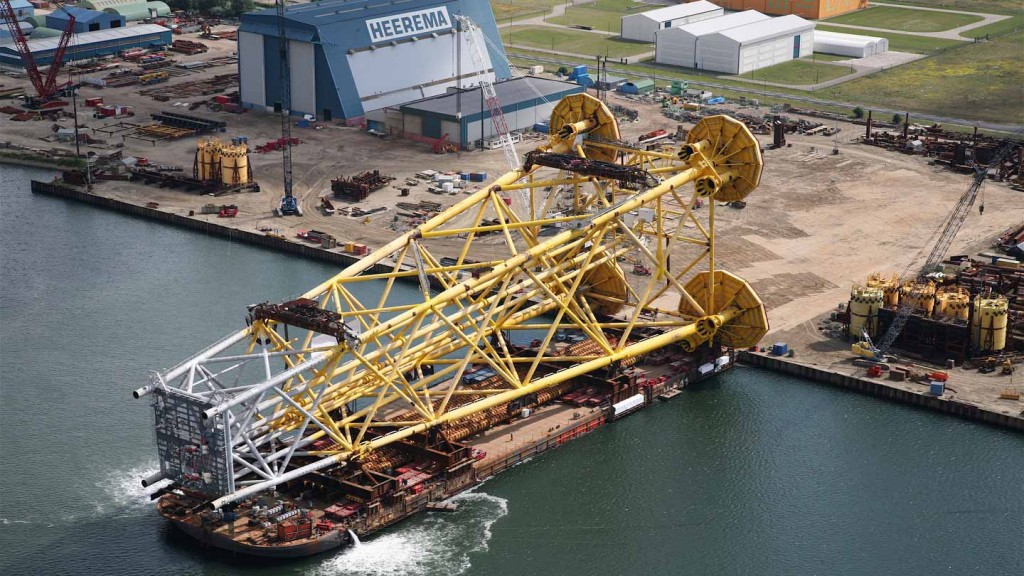After successful design also implementation by PQR
Heerema Fabrication Group’s (HFG) ICT infrastructure was outdated and maintenance contracts were expiring. In collaboration with Heerema Fabrication Group, PQR created a new Architecture and Design design. Implementation of the project is complete. Compared to the old situation, ICT management costs do not go up; more is now done for less.
Heerema Fabrication Group
Heerema Fabrication Group (HFG) specializes in the design and construction of large and complicated offshore platforms for the oil, gas and power industry. HFG offers a comprehensive range of services, including front-end engineering, detailed manufacturing design, procurement, construction and installation of such platforms. Four large yards around the North Sea and in Poland and an engineering branch with multiple disciplines in the Netherlands give HFG the ability to design and build large structures in controlled conditions.
Replacing decentralized ICT environments
The decentralized ICT environments were outdated and the maintenance contracts were coming to an end. HFG amortized this ICT infrastructure over five years; after this period, budget was available again. In 2011, HFG issued a Request for Proposal (RFP) for the functional design of a new data center environment. HFG wanted two new data centers, one primary and one secondary data center suitable as development, test and acceptance environments and disaster recovery sites. The new data center had to be future-proof for at least five years and based on globally applicable ICT standards. HFG has launched the international Hosting & Infra Project (Phoenix) for this purpose. The new ICT infrastructure will be built in the two new internal data centers owned by HFG and rolled out in four locations in the Netherlands, England and Poland.
Background: One HFG
Peter van Kuik, Project Manager ‘Phoenix’: “From 2009, we started standardizing our infrastructure in all branches. After all, exchanging files and data is then a lot easier and with modern software packages it is possible to work together securely virtually. In January 2011, One HFG was announced; One HFG’s main goal is to forge the four shipyards together into one organization. To this end, it is critical to implement a central data center model. It represents one ICT infrastructure, one communication platform and one way of communicating for all our sites, from our own data centers.”
Improvements
The above infrastructure was not only outdated but also only partially consolidated; in the new data centers, consolidation has been maximized and optimized. As part of these developments, the Wide Area Network (WAN) has also been redesigned with higher bandwidths. All servers are virtualized using Microsoft Hyper-V Server 2012 R2. All business-critical services are now redundant. The servers are installed in upgraded server rooms on two of the four sites.
Case study
Objectives new infrastructure
“The goals of the new infrastructure are twofold,” said Van Kuik. “On the one hand, the infrastructure is intended to facilitate the HFG strategy and make collaboration efficient. This is made possible through centralizing the front and back end in the data center. On the other hand, the new ICT environment must be realized based on the latest ICT standards to simplify maintenance and enable both proactive and reactive support. The new environment must be able to last five years and be flexible to accommodate unexpected growth.”
The desired result
HFG will now have a twin data center running the new ICT infrastructure. Based on consulting workshops, HFG decided to standardize on HP equipment. The data centre is equipped with HP servers, HP 3PAR storage, HP StorageWorks P2000 as backup and HP Core Switches. The whole thing is secured with backup technology from Veeam.
To establish the required parameters, a design workshop then took place. During this workshop, server naming, disk layout, IP addresses, default gateway and DNS servers were defined. It also determined which Virtual Local Area Networks and connections to the Storage Area Network were needed. Finally, the service accounts and configuration of the Microsoft Hyper-V infrastructure were established. Based on these decisions, the ICT infrastructure was implemented. Finally, the service accounts and configuration of the Microsoft Hyper-V infrastructure were set up.
PQR approach
Van Kuik: “The project approach used by PQR works very well. We got buy-in from all stakeholders within the organization because we took a step-by-step approach. Clear, well-organized, with reports for management and specialists. The end result has been great! With the budget of five years ago, we have now managed to realize an ultra-modern, redundant and scalable twin data center. The ICT management costs are not going up; we are now doing more for the same money!”
Problem
- ICT Infrastructure is outdated
- Maintenance contracts expire
- Limited scalability
- Business continuity
- Desire to collaborate easily and securely with multiple offices in multiple countries
The PQR approach
- Organize design workshops to clearly define desired outcome
- Organization consulting workshop to determine hardware choice
- Involve all stakeholders and clear roles
- Implementation of hardware and software
- Highlight reports and financial statements
- Daily thorough risk management and operational consultation
Results
- A redundant twin data center
- Server based computing from centralized front and backend
- One unified collaboration package for all branches
- Scalable environment
- High degree of business continuity
- Cost savings through consolidation
